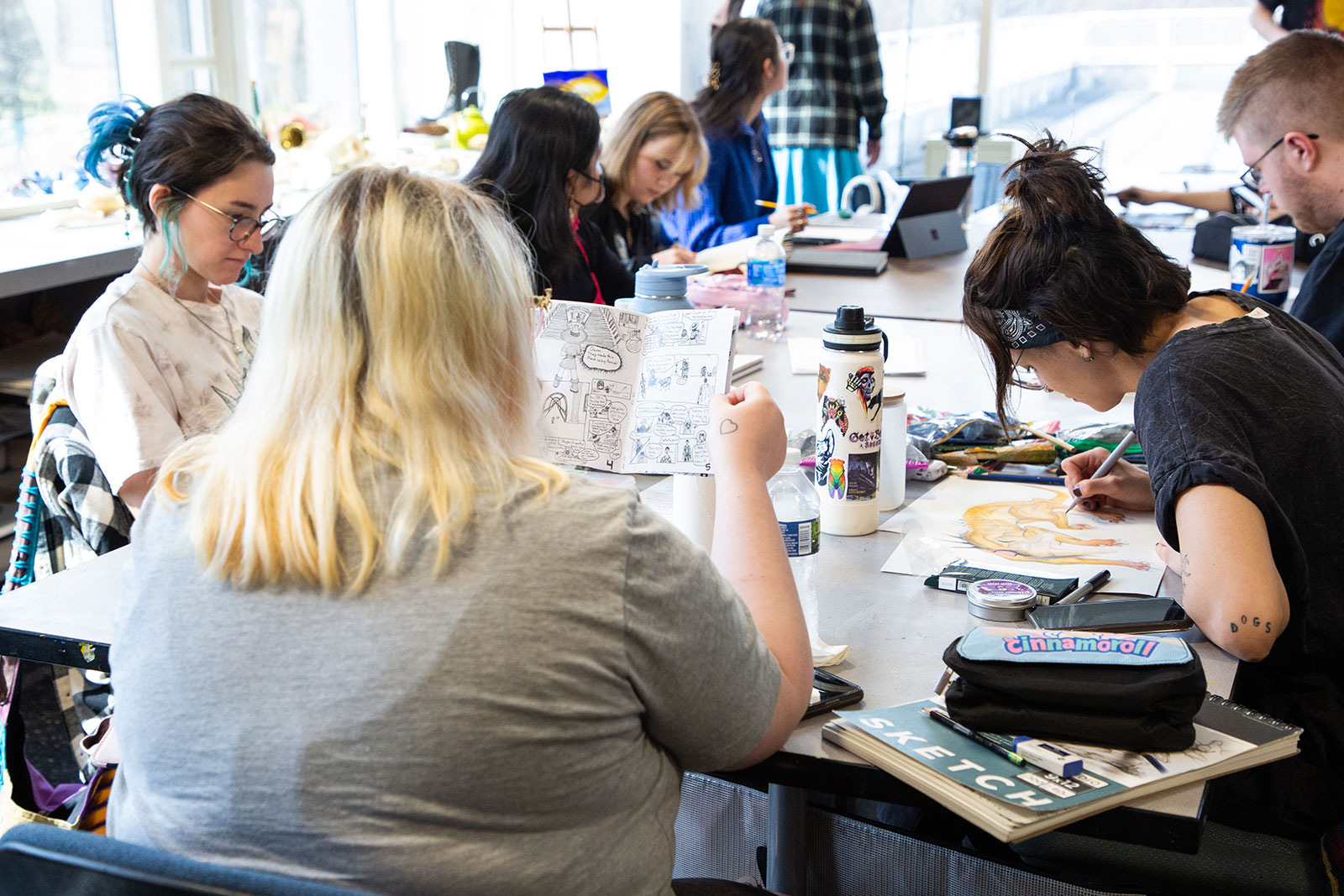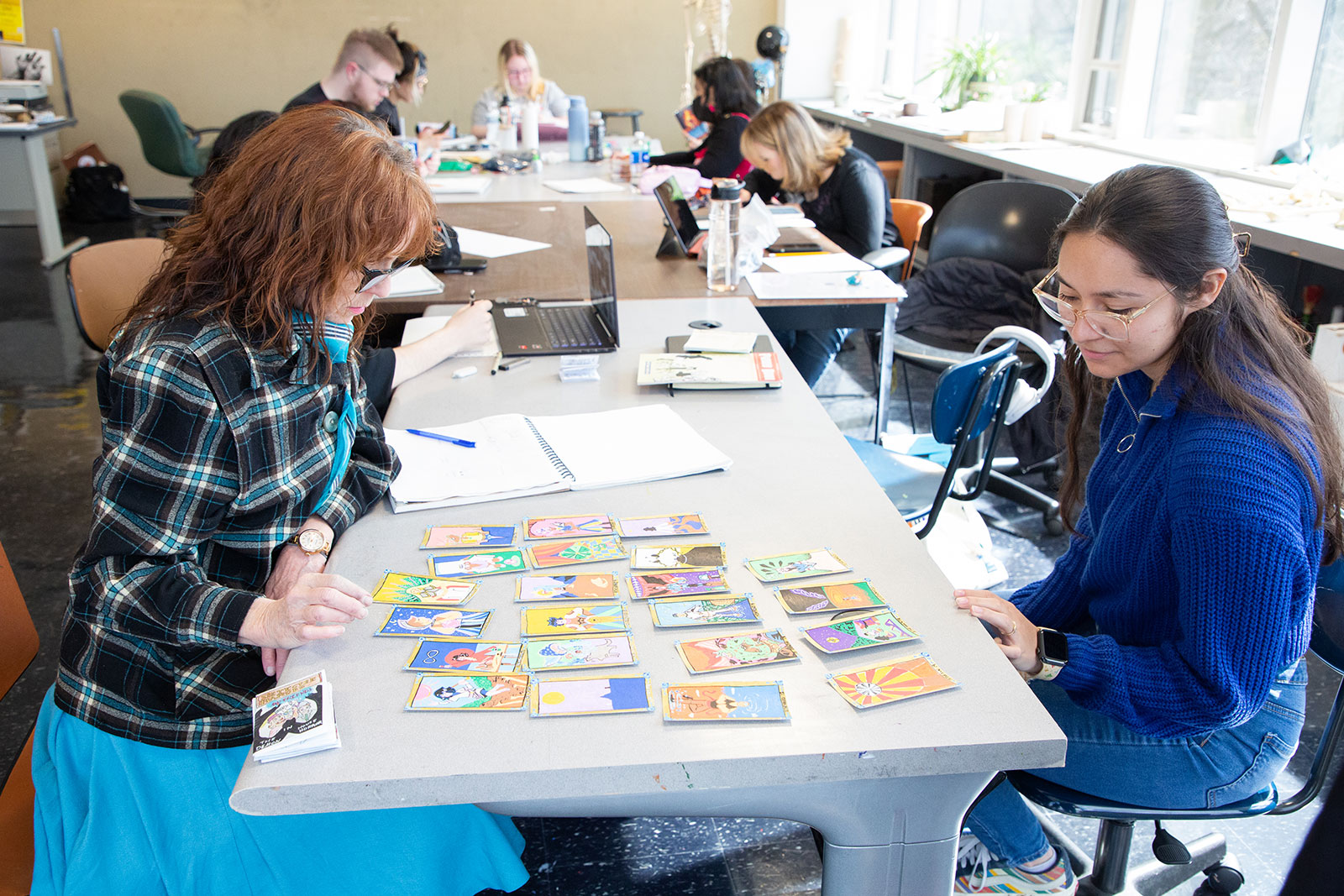Study Human History Through Art
 From painting and sculpture to photography, film, performance, and architecture, the arts provide a visual record of the evolution of human societies over history. Students in the art history and museum studies program at the University of Michigan-Dearborn choose from a wide variety of courses in world art that include broad surveys and advanced studies of specific cultures, periods, media, and topics. Research assignments often take them to area arts institutions such as the Detroit Institute of Arts, the University of Michigan Museum of Art, the Kelsey Museum of Archaeology, the Cranbrook Art Museum, and the Toledo Museum of Art.
From painting and sculpture to photography, film, performance, and architecture, the arts provide a visual record of the evolution of human societies over history. Students in the art history and museum studies program at the University of Michigan-Dearborn choose from a wide variety of courses in world art that include broad surveys and advanced studies of specific cultures, periods, media, and topics. Research assignments often take them to area arts institutions such as the Detroit Institute of Arts, the University of Michigan Museum of Art, the Kelsey Museum of Archaeology, the Cranbrook Art Museum, and the Toledo Museum of Art.
While the major focuses on art, it teaches students a range of skills that are directly transferable to a wide variety of careers. Visit the Art History and Museum Studies Major Map to learn more about opportunities in the program.
Where an Art History and Museum Studies Degree Will Take You
Our program not only focuses on enriching your understanding of art, but also prepares you for the real world. It teaches you how to perform multidisciplinary research, synthesize information, conduct deep analysis, and communicate with diverse audiences. These critical thinking skills are crucial to today’s workforce, and prepare you for careers in areas such as museum work, marketing, and information and library science, among others. Many of our students also choose to further their studies and research in graduate programs.

